Mempool: What Is It And How Does It Work?
Learn how the mempool works and why it's important for transaction confirmation. Discover how to optimize transaction fees and track the status of your Bitcoin transactions using mempool tools.
What Is The Mempool?
The mempool (short for "memory pool") is a component of the Bitcoin network that serves as a temporary storage area for unconfirmed transactions. It has also been used by other altcoins.
When a Bitcoin user sends a transaction, it is broadcast to the network and stored in each node's mempool until it is included in a block by a miner.
The mempool acts as a waiting room for transactions to be validated and added to the blockchain, and it is an essential part of the Bitcoin network's transaction processing and validation system.
| TERM | DEFINITION |
|---|---|
| 🔗 Blockchain | A decentralized, distributed ledger technology that records transactions in a secure and transparent manner |
| 💾 Transaction | A transfer of cryptocurrency between two parties, recorded on the blockchain |
| 📥 Mempool | A node's list of unconfirmed transactions that have been broadcasted to the network but not yet added to a block |
| 👥 Node | A participant in the decentralized network that maintains a copy of the blockchain and participates in transaction verification and block creation |
| 🚀 Transaction Fee | A small amount of cryptocurrency paid by the sender to incentivize miners to prioritize their transaction, measured in Satoshis/Vbyte |
| 🧠 Transaction Priority | A measure of a transaction's urgency, determined by factors such as fee amount and transaction size |
| 🧮 Transaction Size | The amount of data in a transaction, measured in bytes, which affects the transaction fee and priority.The average Bitcoin transaction size is about 250 bytes |
| 🔎 Transaction ID | A unique identifier assigned to a transaction on the blockchain for easy tracking and verification |
How Does The Mempool Works?
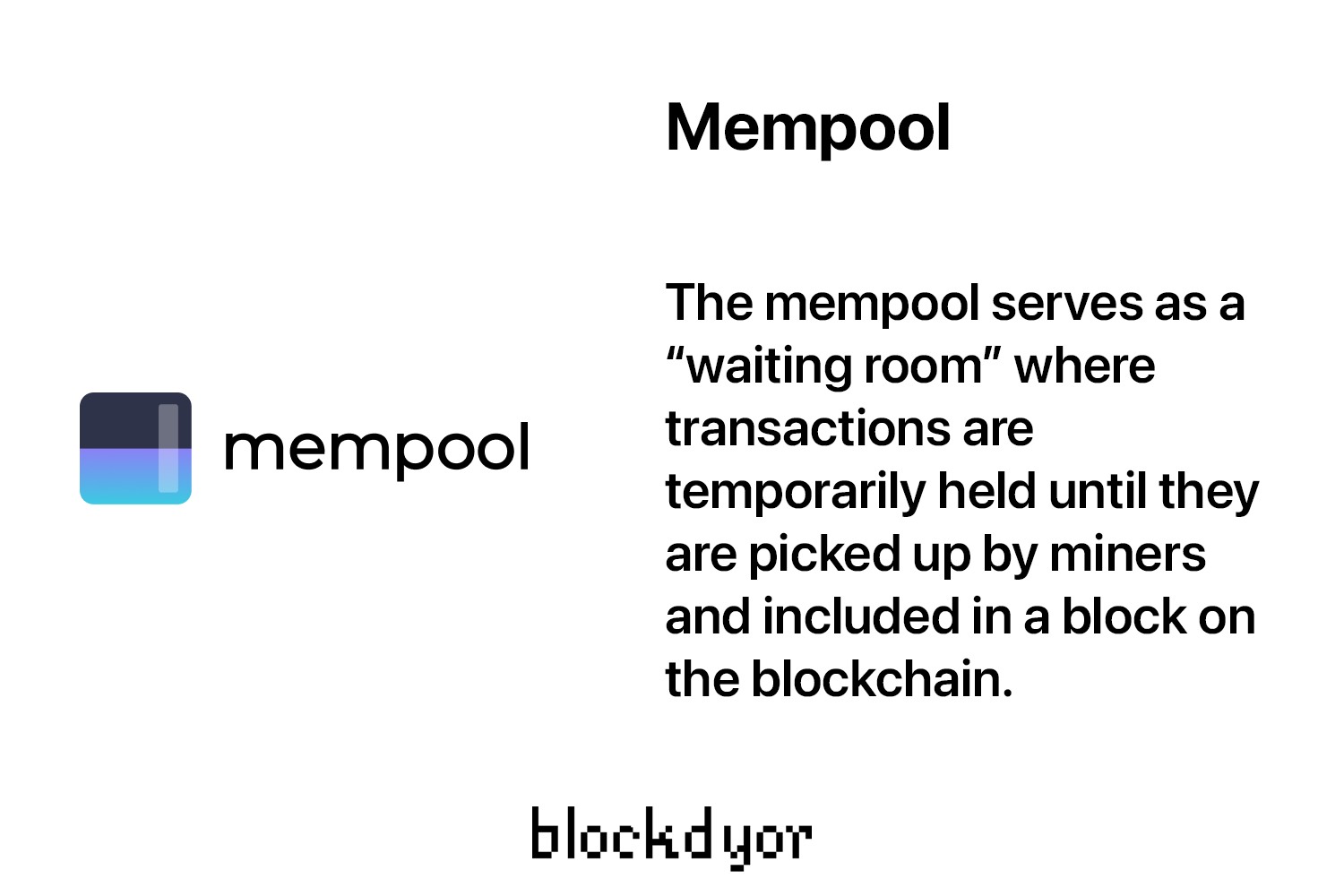
The mempool is an essential component of the Bitcoin network, serving as the holding area for all pending transactions waiting to be validated by miners. Each node in the network has its own mempool, which stores unconfirmed transactions that the node has seen and verified. Before a transaction can be added to a node's mempool, it must go through a series of checks to ensure its syntactic correctness and validity.
The process of adding a transaction to the mempool is initiated when a node receives a transaction from another node. The node then checks the transaction's syntax, making sure that both the input and output lists are not empty and that the transaction size is less than the maximum block size. The node also checks the total value of the output against the legal money range, the presence of coinbase transactions, and nLockTime.
If the transaction passes all the checks, it is added to the node's mempool and relayed to its peers. However, if the mempool size approaches the node's RAM capacity, transactions with fees per kB lower than a set threshold are immediately removed from the mempool. This process helps prevent the node from crashing and restarting with an empty mempool.
When a new block is validated by miners, all transactions contained within it, as well as transactions that have conflicting inputs, are removed from the mempool of each node in the network. This results in a significant drop in the mempool size. By monitoring the mempool's minimum fee threshold, users can get an idea of the congestion in the network and adjust their transaction fees accordingly.
If you want to learn more about mempool and how it works, I highly recommend checking out a video by Andreas Antonopoulos. Antonopoulos is a renowned Bitcoin advocate and author of several books about Bitcoin, and in the video, he provides a fast and easy-to-understand explanation of the mempool. You can find it down here.
The mempool explained by Andreas Antonopoulos
What A Mempool Looks Like
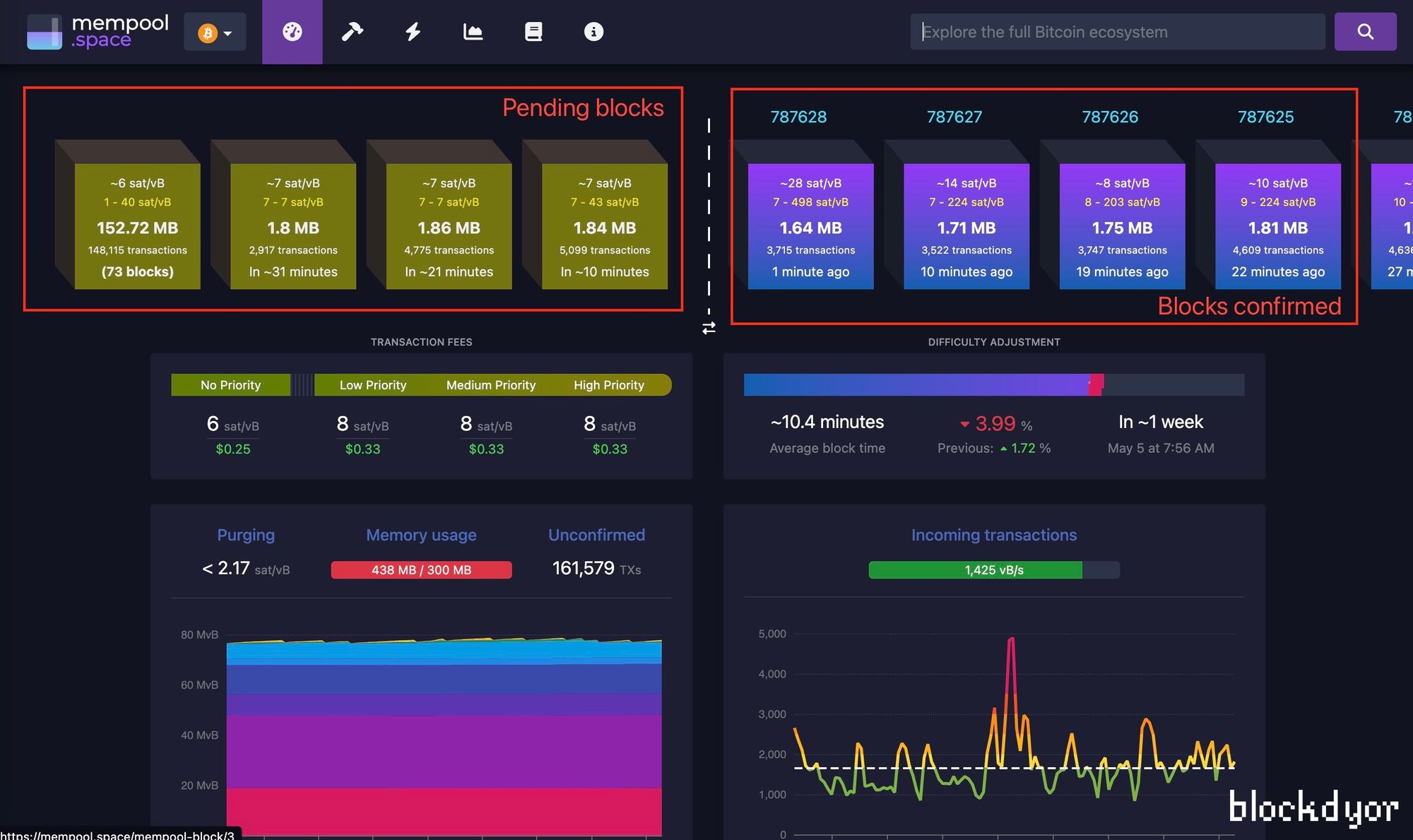
In this example, we utilized mempool.space, a user-friendly and visually appealing representation of a mempool. As illustrated in the accompanying screenshot, the two crucial components of the mempool are located at the top of the page. These components include:
- Pending Blocks: These are unconfirmed transactions that have been broadcast to the network and are waiting to be processed by miners. The number of pending blocks can indicate how congested the network is and how long it may take for a transaction to be confirmed.
- Confirmed Blocks: These are the blocks that have been added to the blockchain and contain confirmed transactions. The number of confirmed blocks can indicate the speed and efficiency of the network in processing transactions.
In addition to pending and confirmed blocks, the mempool contains a wealth of other information that can provide valuable insights into the Bitcoin network's health and efficiency.

One important factor is transaction fees and their priority. The mempool tracks the fees paid by users to include their transactions in the next block. Higher fees result in a higher priority for inclusion, and miners will generally prioritize transactions with higher fees to maximize their profits. Lower fees will result in lower priority for inclusion, and sometimes even the rejection.
The difficulty adjustment is another critical piece of information tracked by the mempool. As the network's hashrate changes, the difficulty of mining new blocks adjusts to ensure a consistent block time. This adjustment can have a significant impact on the mempool as miners may switch to or away from Bitcoin mining depending on its profitability.
Memory usage and purging are also essential to the mempool's performance. As new transactions arrive, they are added to the mempool's memory, and over time the size of the mempool can grow quite large. To prevent memory usage from becoming too excessive, the mempool will periodically purge old, unconfirmed transactions that are no longer relevant.
If the number of incoming transactions is greater than the rate at which they are being confirmed, the size of the mempool increases. The default allocation for mempool memory in Bitcoin Core is 300MB.
When a node's mempool reaches its full capacity of allocated memory, it will reject new transactions below a certain feerate threshold.
Hence, it becomes vital to ensure that the feerate of the transaction exceeds the threshold to get processed. The current threshold feerate and memory usage are prominently displayed on the front page of Mempool.
Finally, the mempool tracks incoming transactions that have not yet been broadcast to the network. This information can provide insights into the number of users preparing to make transactions and their behavior, allowing for better predictions of the network's future state.
By monitoring these and other key metrics in the mempool, Bitcoin developers and users can gain a deeper understanding of the network's performance and take actions to improve its efficiency and scalability.
Why Does The Mempool Matter?
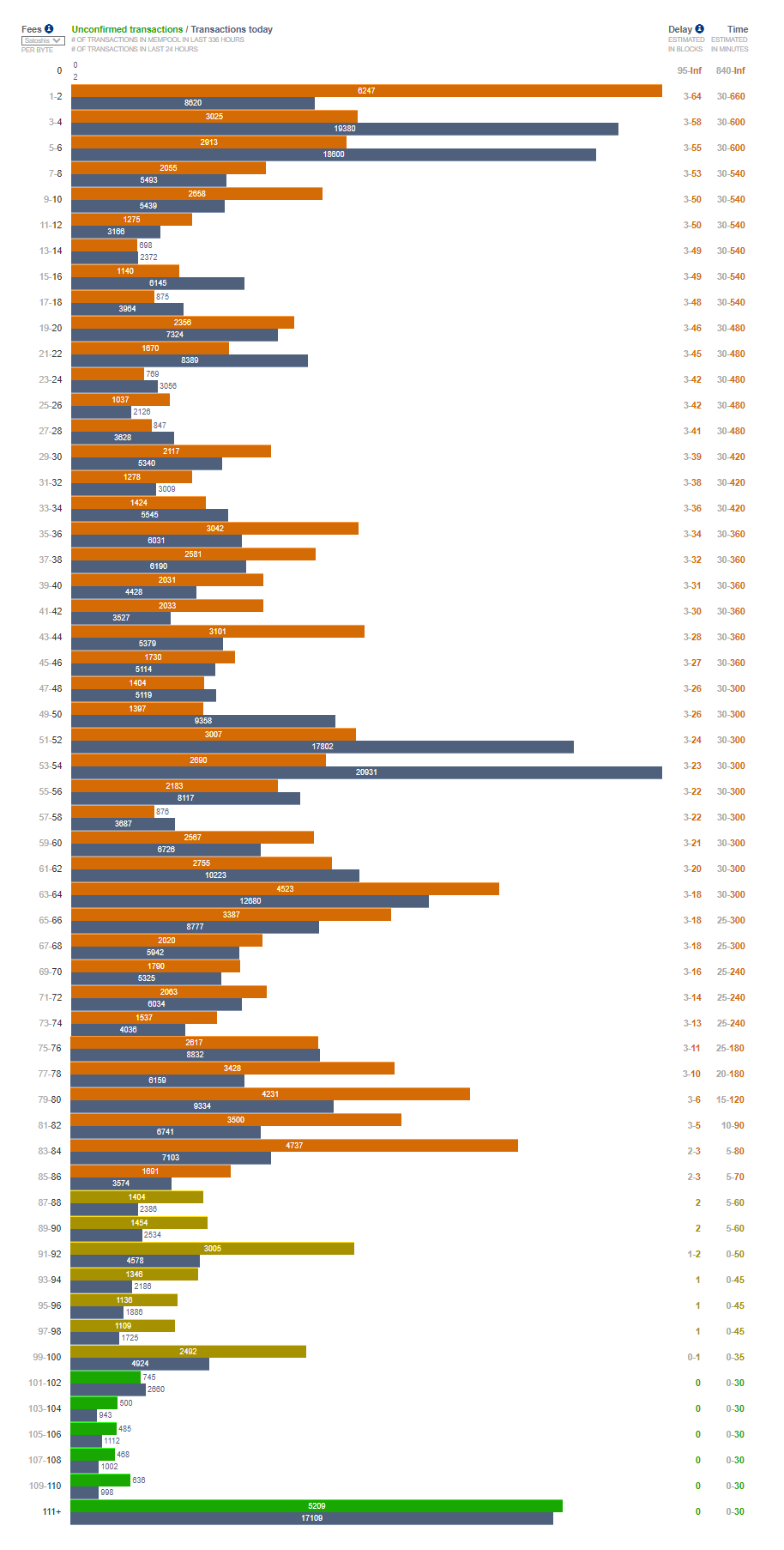
The transactions in the mempool are sorted by their fee rate, with higher fee rate transactions being prioritized by the miners.
As a result, the mempool is important for determining the speed at which a transaction gets confirmed on the Bitcoin network. If there are many transactions waiting in the mempool with higher fee rates than a particular transaction, that transaction may take longer to confirm as it has to wait for the higher fee rate transactions to be processed first.
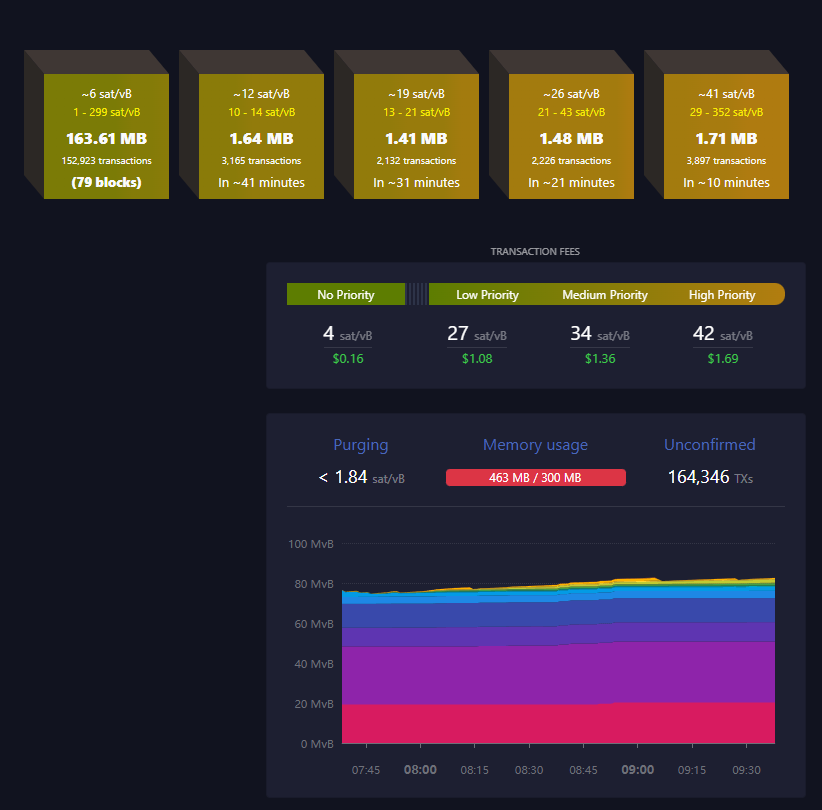
Furthermore, fluctuations in the size of the mempool can impact the transaction fees on the Bitcoin network. When the mempool is congested with a large number of unconfirmed transactions, the fees required to get a transaction confirmed in a timely manner tend to increase. Conversely, when the Mempool is relatively empty, fees tend to be lower as there is less competition for block space.
How To Monitor The Mempool
There are several tools and services available to monitor the mempool of different cryptocurrencies, including Bitcoin.
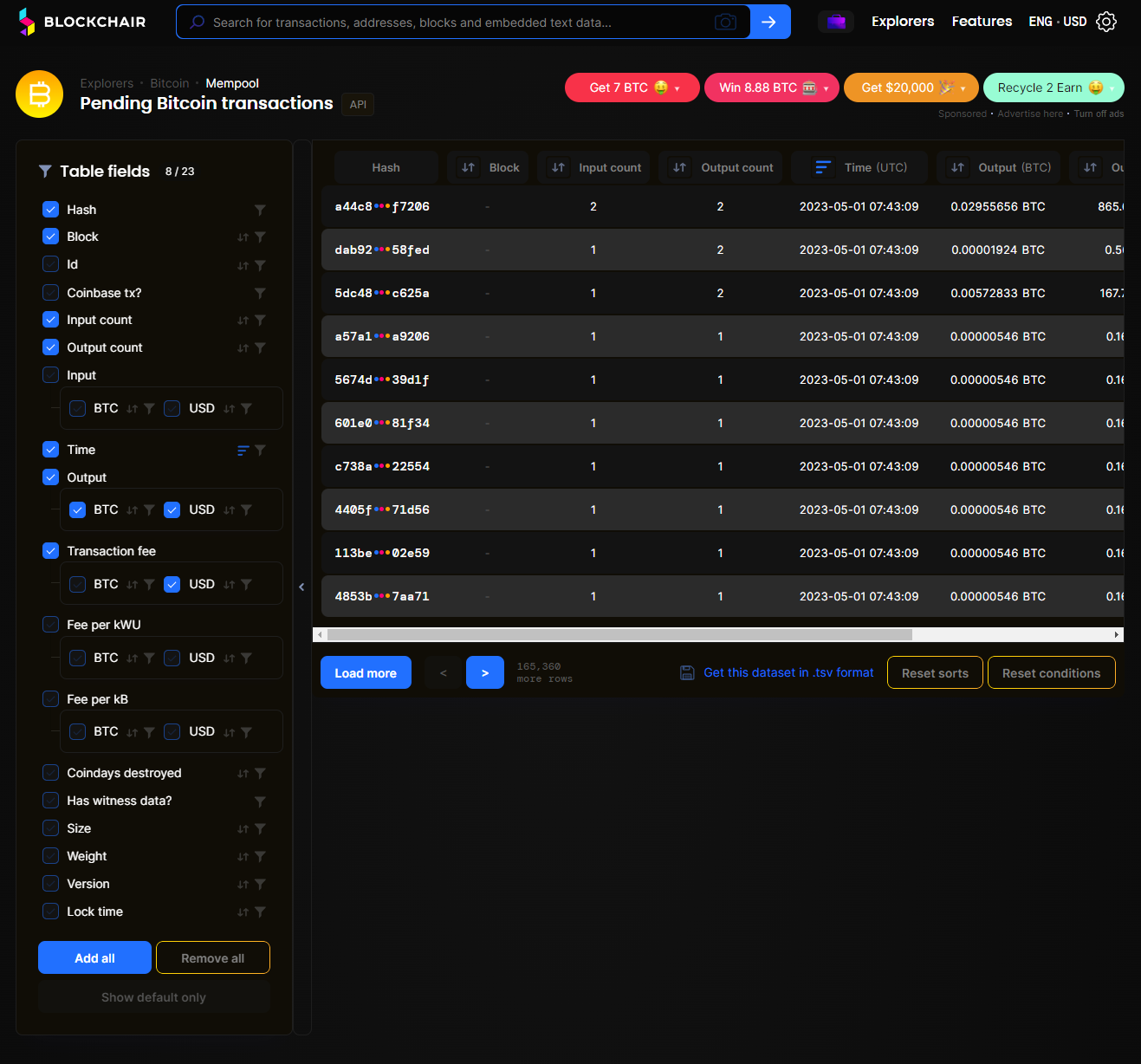
One way to monitor the mempool is to use a blockchain explorer, such as Blockstream, Blockchair or Blockchain.com. These explorers allow you to view the current state of the mempool, including the number of transactions waiting to be confirmed, the total size of the mempool, and the average transaction fee.
Another option is to use a mempool monitoring service, such as mempool.observer or mempool.space. These services provide more detailed information about the mempool, including the distribution of transactions by fee rate, the age of the oldest transactions, and the estimated time to confirmation for different fee rates.
You can also use APIs provided by blockchain data providers, such as Bitquery or Coinmetrics, to access mempool data programmatically and integrate it into your own applications or scripts.
Overall, monitoring the mempool can help you make informed decisions about when to send transactions and what fee rate to use to ensure timely confirmation. It can also give you insights into the overall health and congestion of the network.
Tips For Clearing Stuck Transactions
When the Bitcoin mempool is congested, there are several things that can be done. One is to prioritize transactions with higher fees as these are the ones that are likely to be processed first.
Nodes may prioritize transactions differently, so it's important to check the status of the Bitcoin mempool before making any transactions.

To speed up transactions, one can use Child Pays For Parent (CPFP) option or the RBF (Replace By Fee) setting on the wallet.
Another option is to use Lightning Network payments, which are much faster and cheaper, without the need for miners to mine the block and confirm it.
Lightning Network payments can be made at CoinGate merchants or at the gift card store, and all one needs is a wallet that supports it. Electrum, Zap, and Phoenix wallets are non-custodial and do not require setting up one's own node.
How To "Undo" A Transaction From The Mempool
Imagine you've sent a transaction to the Bitcoin mempool with a hypothetical fee of around 10 satoshis per virtual byte (sat/vb). You've signed and transmitted it to the Bitcoin network, but it hasn't been confirmed because the fees for the current blocks have risen since then. In this situation, you typically have two options:
- Wait for Fee Reduction: You can choose to wait for the fees to lower. This waiting period can extend from days to weeks or even months with your transaction remaining in the mempool.
- Fee Adjustment via RBF (Replace by Fee): Alternatively, you can increase the fees for your transaction using techniques like Replace by Fee (RBF) or other fee bumping methods to give it a better chance of being included in a block.
However, what if you're looking for a third option, like removing the transaction from the mempool altogether? In theory, low-fee transactions should eventually drop out of mempools as they get purged.
However, this isn't guaranteed because there are numerous nodes around the world, each running their own Bitcoin node with its own mempool. For instance, while your own node might drop the transaction after a month, others may retain it, and it could still be floating in their mempools. It might eventually get confirmed during a period of lower transaction volume.
It's essential to operate under the assumption that your transaction might never drop from all mempools. This is because someone could potentially store it and reintroduce it to the mempool at a later time. If your transaction becomes stuck, your best options are either to increase the fee effectively to push it through or to send the affected Unspent Transaction Outputs (UTXOs) to yourself via another transaction, making the first one invalid.
How Bitcoin Fees Affect the mempool
Bitcoin fees play a significant role in the mempool. As we noted previously, when there is high demand for transactions, meaning more transactions are being sent than can be processed in the limited block space available, the mempool can become congested with unconfirmed transactions.
At this point, transaction fees become very important as they help determine which transactions get processed first. Miners will prioritize transactions with higher fees as they stand to earn more from them. This means that transactions with low fees may be left unconfirmed for longer periods of time, especially during times of high demand.
Users who want to ensure their transactions are processed quickly will often opt to pay higher fees to incentivize miners to process their transactions. This can be particularly important for time-sensitive transactions, such as buying or selling Bitcoin during times of high volatility.
Overall, fees have a direct impact on the speed and efficiency of the Bitcoin network. By paying higher fees, users can ensure their transactions are processed quickly and added to the blockchain. Conversely, when fees are low, users may experience longer wait times for their transactions to be confirmed.
Understanding mempool Backlogs
A mempool backlog occurs when the number of unconfirmed transactions waiting to be processed by the miners exceeds the capacity of the current block size limit. In other words, when there are more transactions waiting to be confirmed than the current block size can handle, a backlog occurs in the mempool.
The mempool is a temporary storage area for unconfirmed transactions. Miners select transactions from the mempool and include them in the next block they mine. However, because the size of each block is limited, miners have to prioritize which transactions to include based on the fees. Transactions with a higher fee are typically included in the block first, and transactions with lower fees may have to wait longer.
When there is a mempool backlog, the time it takes for a transaction to be confirmed can be longer than usual, as there are more transactions competing for a limited amount of block space. As a result, users may need to pay a higher fee to get their transaction confirmed faster. Alternatively, users can choose to wait until the mempool clears up and the backlog reduces, which could take anywhere from a few minutes to a few hours.
It's worth noting that the mempool backlog can vary depending on network congestion and the number of transactions being submitted to the network. When the number of transactions being submitted is high, the mempool backlog can quickly fill up, causing delays and higher fees. Conversely, when the number of transactions being submitted is low, the mempool backlog may clear up quickly, and transaction fees may be lower.
Improving Mempool Efficiency With SegWit
Segregated Witness (SegWit) is a protocol upgrade implemented in 2017 for the Bitcoin network. One of the main benefits of SegWit is that it improved the efficiency of the Bitcoin mempool by increasing the overall block size limit and reducing transaction fees.
Before the SegWit upgrade, the block size limit on the Bitcoin network was 1MB. This meant that the number of transactions that could be included in a single block was limited, resulting in a backlog of transactions in the mempool. This, in turn, led to higher transaction fees, as users were forced to compete for limited block space.
With the implementation of SegWit, the block size limit was effectively increased to 4MB, as the upgrade separated the digital signature data from the transaction data, allowing more transactions to fit into a single block. This resulted in faster confirmation times for transactions and lower fees.
Additionally, SegWit also introduced the concept of transaction batching, which allowed multiple transactions to be combined into a single transaction. This helped to reduce the overall number of transactions in the mempool, further improving the efficiency of the Bitcoin network.
Overall, SegWit significantly improved the efficiency of the Bitcoin network by reducing the size of transactions and increasing the block size limit. This, in turn, helped to reduce transaction fees and the backlog of transactions in the mempool, making Bitcoin transactions faster and cheaper for users.
Mempool vs. Blockchain: What's The Difference?
The mempool and blockchain are two important components of a blockchain-based system like Bitcoin, but they serve different functions.
The mempool, short for "memory pool," is a temporary storage area where unconfirmed transactions wait to be included in the next block by a miner. Each node on the Bitcoin network maintains its own mempool, which contains a copy of all valid transactions it has received but which have not yet been added to a block. When a new block is added to the blockchain, all the transactions in that block are removed from the mempool.
The blockchain, on the other hand, is a permanent, decentralized ledger of all confirmed transactions that have ever occurred on the network. Each block in the blockchain contains a group of transactions that have been verified and added to the network by miners. Once a block is added to the blockchain, its transactions become permanent and cannot be altered or removed.
The Future of the Mempool and Bitcoin Scalability
The future of the Mempool and Bitcoin scalability is an area of active research and development in the cryptocurrency community. Several solutions are being explored to address the issue of scalability, which is a critical factor for the widespread adoption of Bitcoin and other altcoins.
One approach is the continued implementation of Segregated Witness (SegWit) and the Lightning Network. SegWit improves transaction efficiency by separating the transaction data from the signature data, allowing more transactions to be included in each block. The Lightning Network, on the other hand, is a layer 2 solution that enables off-chain transactions, reducing the load on the main blockchain and the mempool.
Another solution is the implementation of Schnorr signatures, which are expected to reduce the size of transaction data and improve scalability. Schnorr signatures enable the aggregation of multiple signatures into a single signature, reducing the overall size of transactions.
In addition, there are ongoing efforts to increase the block size limit, which could improve the speed and efficiency of transactions. However, this approach is controversial and has led to debates in the cryptocurrency community, as increasing the block size limit could potentially increase the risk of centralization and reduce the security of the network.
Bottom Line
In conclusion, the mempool is a crucial component of the Bitcoin network that manages transactions waiting to be confirmed by miners. Understanding the mempool and how it works can help users optimize their transactions for lower fees and faster confirmation times.
As the popularity of Bitcoin continues to grow, improvements in technology and network upgrades like SegWit will continue to enhance the mempool's efficiency and scalability. Keeping an eye on developments in this area can help users stay ahead of the curve and make the most out of their Bitcoin transactions.

